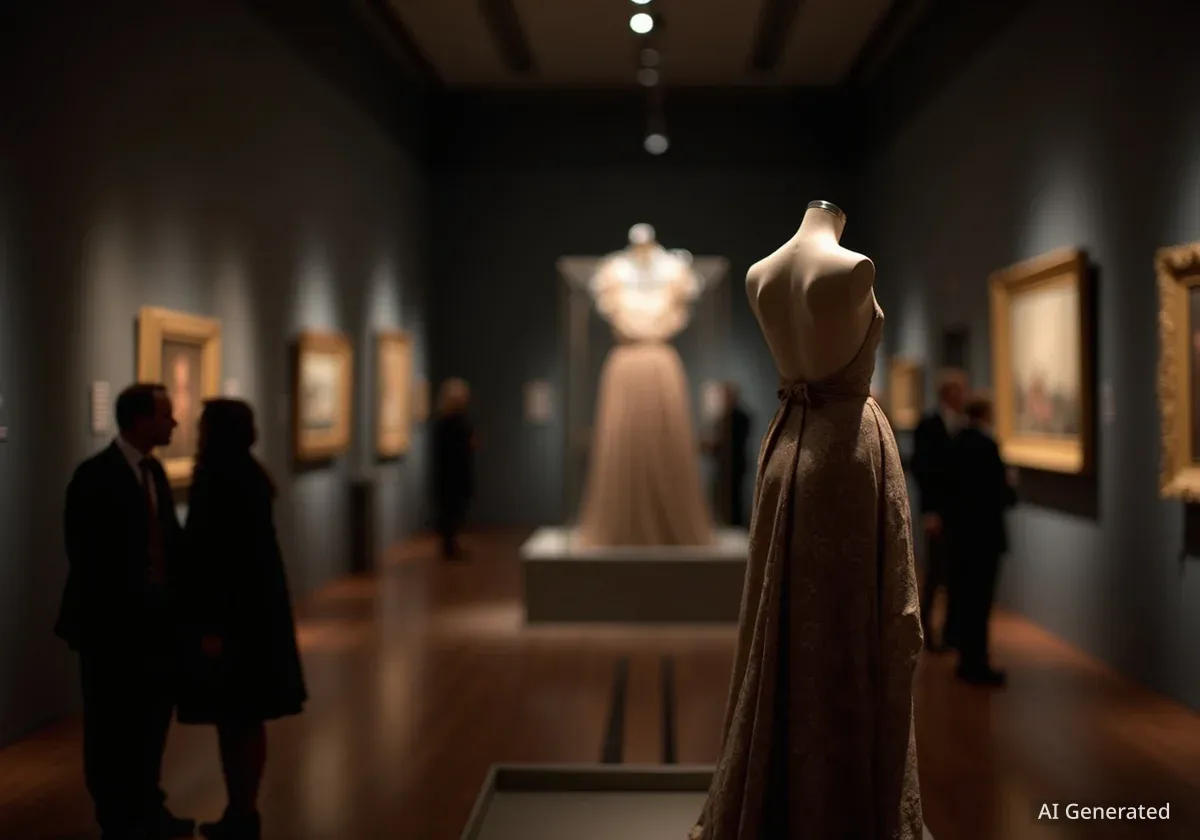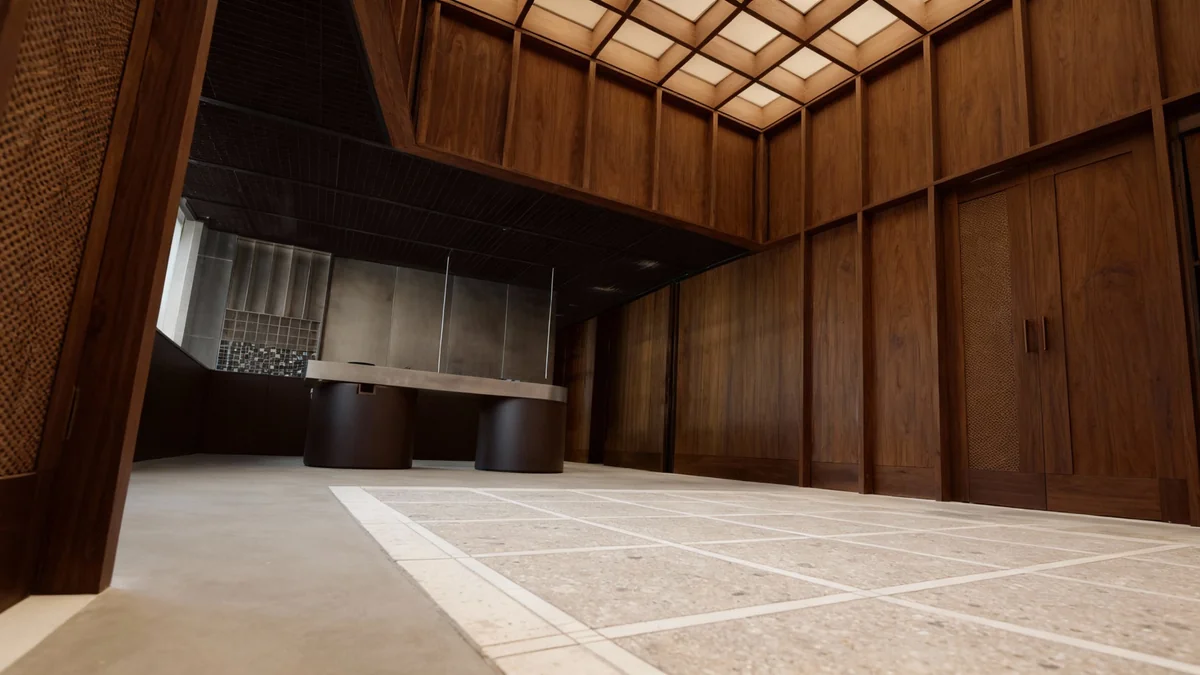The National Portrait Gallery in London has opened a significant exhibition focusing on the fashion photography of Cecil Beaton. This marks the first major display dedicated solely to Beaton's work in the fashion industry. The exhibition provides a comprehensive look at his career, showcasing his influence on how high society, royalty, and Hollywood stars were visually presented.
Cecil Beaton, known for his diverse artistic talents, including photography, stage and costume design, and writing, captured some of the 20th century's most iconic figures. His fashion photography played a crucial role in shaping public perception and setting trends across different eras.
Key Takeaways
- First major exhibition dedicated to Cecil Beaton's fashion photography.
- Showcases his work with high society, royalty, and Hollywood figures.
- Highlights Beaton's influence on fashion and portraiture in the 20th century.
Cecil Beaton's Extensive Career in Fashion
Cecil Beaton's career spanned over five decades, from the 1920s through the 1970s. He became famous for his elegant and often dramatic photographic style. His work frequently appeared in major publications like Vogue and Vanity Fair, where he helped define fashion imagery.
Beaton's ability to blend glamour with an intimate understanding of his subjects made his photographs distinctive. He often used elaborate sets and innovative lighting, transforming simple fashion shoots into artistic statements. This approach set him apart from many of his contemporaries.
Interesting Fact
Cecil Beaton was knighted in 1972 for his services to photography and the arts. His career included Oscar wins for costume design and art direction in films such as Gigi (1958) and My Fair Lady (1964).
Documenting Eras and Styles
The exhibition at the National Portrait Gallery includes photographs that document significant shifts in fashion and culture. From the sophisticated styles of the 1920s to the evolving trends of the post-war period, Beaton captured it all. His lens recorded the changing silhouette of women's clothing, the rise of new designers, and the influence of global events on fashion.
According to exhibition curators, Beaton's extensive archive offers a unique historical record. It shows how fashion reflected broader societal changes, from economic shifts to cultural movements. His images are not just fashion shots; they are cultural artifacts.
Photographer to Royalty and Celebrities
One of Beaton's most enduring legacies is his work with members of the British Royal Family. He was the official photographer for the Coronation of Queen Elizabeth II in 1953. His portraits of the Queen and other royals are among the most recognized images of the monarchy.
Beyond royalty, Beaton photographed a vast array of celebrities. His subjects included Hollywood legends such as Marilyn Monroe, Audrey Hepburn, and Elizabeth Taylor. He also captured leading figures in art, literature, and society, including Greta Garbo, Salvador Dalí, and Winston Churchill.
"Beaton had a unique gift for capturing the essence of his subjects, whether they were queens or film stars. He understood how to create an image that conveyed both grandeur and personality," stated Dr. Eleanor Vance, an art historian.
His portraits were often characterized by their theatricality and attention to detail. He meticulously planned each shot, from the background to the clothing, ensuring every element contributed to the overall narrative of the image.
Background on Cecil Beaton
Cecil Beaton (1904–1980) was a British photographer, diarist, painter, and designer. He was born in London and developed an early interest in photography. His career gained momentum in the 1920s, and he quickly became a prominent figure in the fashion and portrait photography scene. His personal diaries also offer valuable insights into the social and cultural landscape of his time.
The Exhibition's Impact and Highlights
The National Portrait Gallery exhibition presents over 100 photographs, many of which are rarely seen by the public. It includes iconic images as well as lesser-known works that highlight Beaton's versatility and artistic range. The display is organized thematically, allowing visitors to explore different facets of his fashion photography.
- Early Career: Focus on his experimental work in the 1920s and 1930s.
- War Years: Beaton's role as a war photographer, capturing the resilience of fashion during challenging times.
- Post-War Glamour: His influential work with Hollywood stars and high fashion magazines in the 1940s and 1950s.
- Royal Portraits: A dedicated section to his iconic photographs of the British Royal Family.
- Design and Influence: How his stage and costume design informed his photographic aesthetic.
The exhibition also includes archival materials, such as contact sheets and personal correspondence, offering a deeper look into Beaton's creative process. These elements provide context for his finished works and demonstrate the effort involved in creating his renowned images.
Visitors can observe the evolution of fashion photography through Beaton's eyes. His work not only documented fashion but also helped to define it, influencing generations of photographers and designers. The exhibition serves as a tribute to his lasting impact on visual culture.
Technical Aspects and Artistic Vision
Beaton was known for his mastery of photographic techniques. He experimented with various cameras and lighting setups to achieve specific effects. His use of natural light, combined with carefully arranged studio lighting, gave his portraits a distinct quality.
He often favored soft focus and ethereal aesthetics, particularly in his early fashion work. Later, his style evolved to include more sharp and dramatic compositions, reflecting the changing tastes of the mid-20th century. This adaptability was a hallmark of his artistic vision.
The exhibition illustrates Beaton's artistic journey, showcasing how he maintained a consistent level of quality while exploring different photographic approaches. His contributions extend beyond individual images to the broader development of fashion photography as an art form.
The exhibition is expected to draw a significant number of visitors. It offers a rare chance to appreciate the depth and breadth of Cecil Beaton's work in fashion photography. His images continue to resonate today, influencing contemporary photographers and designers. The display confirms his status as a pivotal figure in 20th-century visual arts.




